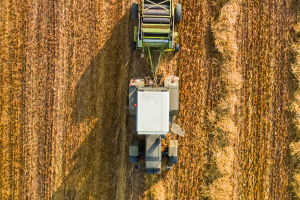Cable cars, also known as aerial tramways or ropeways, are a collective term for equipment that utilizes steel ropes for the conveyance of passengers or goods.
To conserve basic construction expenses, cable car routes should avoid excessive slope variations.
The gradient of the track generally ranges from 15° to 25°. Depending on factors such as transport volume, terrain, and distance, routes can be designed in various forms such as single-track, double-track, and single-track with passing loops or transfer stations.
The operational speed of cable car cabins typically does not exceed 13 kilometers per hour. To accommodate terrain conditions and ensure passenger comfort, seats in passenger cabins should be parallel to the horizontal plane and arranged in a step-like manner for ease of boarding and unloading of goods.
In the event of accidents such as overspeeding, overloading, derailment, power failure, or cable breakage during operation, corresponding safety measures must be in place to ensure passenger safety.
Due to its poor adaptability to terrain, high construction costs, and low efficiency for long-distance transportation, the application and development of cable cars are limited. Furthermore, according to professional naming conventions, cable car equipment operating with vehicles and steel ropes overhead is defined as an aerial cableway. Meanwhile, cable car equipment operating with vehicles and steel ropes walking along tracks on the ground is defined as a ground cable car.
A ground cable car is a type of transportation in which vehicles are driven by a motor pulling a steel cable, transporting along tracks laid on the ground with a certain gradient. The track gradient is not restricted but generally ranges from 15° to 25°. Cable car lines can be designed in various forms such as single-track, double-track, or single-track with passing loops or transfer stations, based on factors like transport volume, terrain, and distance.
To ensure passenger comfort and facilitate boarding, as well as loading and unloading of goods, seats inside the cabins should be parallel to the horizontal plane and arranged in a step-like manner. A series of safety facilities are equipped on cable cars to ensure passenger safety.
Aerial cableways can be classified into two types based on their support and traction methods:
1. Single-rope system: Utilizing a single steel rope to both support the weight of the carriage and provide traction.
2. Double-rope system: Using multiple steel ropes, with one or two non-moving ropes supporting the weight of the carriage, while the other ropes are responsible for pulling the carriage.
According to the mode of operation, cable cars can be divided into:
1. Reversible: With only one pair of carriages on the cableway, when one carriage ascends, the other descends.
After both carriages reach the stations, they travel in opposite directions. This type of cableway is called an Aerial Tramway. Reversible cable cars generally have a higher passenger capacity per carriage, up to 100 people, and are capable of climbing steep slopes with good wind resistance. The speed of reversible cable cars can reach 8 meters per second.
2. Circulating: Multiple carriages are present on the cableway, with the traction cable forming an endless loop around the drive and return wheels. After a carriage reaches the endpoint, it returns to the starting point in a continuous loop. This type of cable car is known as a Gondola lift.
3. Fixed grip: Carriages or chairs do not release the steel rope during normal operation, so all carriages on the same rope travel at the same speed. Some fixed grip cableways have carriages evenly distributed along the entire length of the rope, which moves at a fixed speed.
While this design is simple, the drawback is that the speed cannot be too fast (generally around 1 meter per second), otherwise boarding and alighting become difficult.
Another type of fixed grip cableway employs a pulsating design, dividing carriages into 4, 6, or 8 groups, each consisting of 3 to 4 carriages. When one group of carriages is at the station, the rope and all groups of carriages simultaneously slow down.
After leaving the station, they accelerate together. This type of cableway has a faster speed (around 0.4 meters per second at the station, and around 4 meters per second outside the station), making boarding and alighting easier, but the distance it can cover is limited, and its carrying capacity is also limited.
4. Detachable: Also known as detachable grip, carriages are held onto the traction cable by spring-controlled clamps. When a carriage reaches a station, the clamps gripping the cable are released, allowing the carriage to decelerate for passenger boarding and alighting.
Before leaving the station, the carriage is mechanically accelerated to match the speed of the cable, and the clamps on the carriage grip the cable again, completing the cycle. This type of cableway has a high speed, up to 6 meters per second, and a large carrying capacity.
The most important safety device for ground cable cars is the track brake, which automatically grips onto the rail in the event of a cable rupture, ensuring passenger safety. Additionally, a digital signal communication system between the car and the station is essential to ensure that when the track brake is activated, the drive unit and control system take appropriate measures such as stopping the car.


